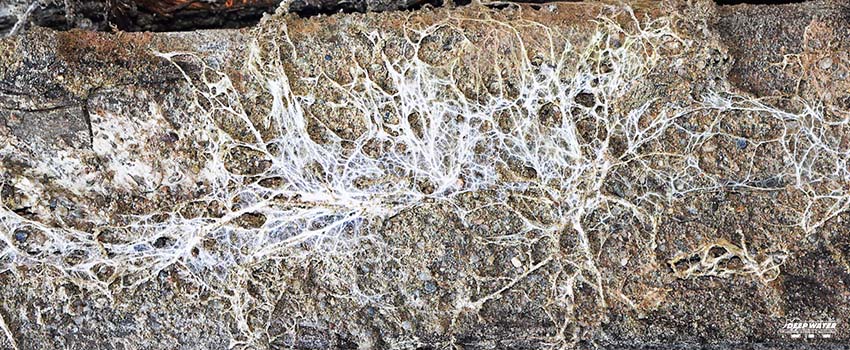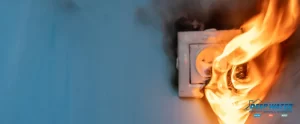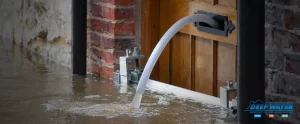One of the most feared causes of house damage is dry rot. While the wet variety can also cause extensive damage and health risk, dry rot most certainly conjures up visions of enormous repair expenses equivalent to termite damage.
Whether you are presently dealing with a dry rot problem or just want to be proactive, it’s important to understand what it is and what causes it.
Dry Rot: What It Is
Dry rot (also known as brown rot) is a wood degradation created by tiny fungi that feed on wood and eat the cell walls that give timber its strength. Dry rot destroys any wooden structures within or outside your home by leaving behind dry, brittle wood.
Unfortunately, many homeowners are unable to recognize the indicators of dry rot infestation. If dry rot is not identified and treated early, it might lead to severe damage that would require the total replacement of all affected wood, which, as we all know, would cost you more time and money.
What Causes Dry Rot
Dry rot, contrary to its name, requires moisture to begin. It may, however, spread in the absence of moisture because the fungi that cause it can produce moisture through the decomposition of wood.
Dry rot can occur when the wood is not adequately dried before installation. It is also possible when the wood is exposed to high humidity and warm temperatures that range from 71 to 77 degrees Fahrenheit. When the bacterium attacks and degrades cellulose in the wood structure, the wood eventually shrinks and develops a deep brown color. Rot spreads swiftly once it begins to grow.
Dry rot may spread across a structure by penetrating numerous materials, including brickwork. It will weaken the entire structure to the point of disintegration if not prevented.
In its early stages, dry rot can be hard to spot. Although wood rot is sometimes concealed by flooring, drywall, or siding, if you look closely, certain indicators may start to emerge later in the cycle.
What is Dry Rot in a House?
Dry rot has early signs that can be detected by the following:
- fungi growth that’s visible and resembles a fluffy white cobweb
- stretched drywall
- droplets of water on the wood’s surface
- dark brown wood
- fragile or feeble wood
- a wet or musty odor
- lightly-colored, easily peeled patches of brown, orange, or purple
- strands of grayish wood or timber
- amid the spores are fruiting mushrooms.
Is Dry Rot Dangerous to Your Family and Home?
Although dry rot spores themselves are not hazardous, living in a home with dry rot is unpleasant, especially when the air is filled with the scent of moist dirt. Moist areas are especially unhealthy for infants, the elderly, and those suffering from respiratory ailments.
Beyond this, dry rot poses a serious threat to the structure of your house since it can swiftly result in significant structural damage.
Dry Rot Prevention
The best defense against dry rot is prevention. Preventing degradation is simpler and less expensive than fixing it. The goal is to keep wood from being exposed to dampness in your home.
Here are some tips to dry rot prevention:
- Seal all doors and windows. Repair any openings that aren’t adequately sealed to avoid outdoor elements like moisture coming in and causing dry rot.
- Check your roof gutter. To help stop dry rot and fungal growth, clean out your gutters on a regular basis and make sure the drains and downspouts are free of obstructions.
- Fix damage to the roof. Similar to windows and doors, it is essential to fix roof issues right away to avoid moisture from trickling into your home.
- Beware of “wet” rooms. The three rooms with the most moisture in your home are bathrooms, kitchen, and laundry room. Dry rot can occur in any area that has a water heater or plumbing device. Pay close attention to these areas of your home, and if you see any leaks or pools of water, call a professional immediately.
- Remember the basement. Basements are the perfect place for dry rot to flourish. Caulk windows and fix any structural flaws that might let water or moisture enter your basement to keep moisture under control.
Dry Rot Repair
You will need to treat dry rot immediately if dry rot prevention is not possible. Here’s how to treat dry rot effectively:
1. Epoxy Treatments
Epoxy can be used to fill in the holes or gaps left from the removal of rotted wood. This is a great solution for minor dry-rot problems.
2. Use Borate
Dry rot may be prevented and treated using borate. It will stop fungus from growing on fresh wood and eliminate those decay-causing fungi. Borate has a low toxin level and does not contain copper or heavy metals.
3. Replacement by a Professional
Calling in an expert for an inspection is necessary if your dry rot issue is severe or doesn’t improve with standard treatment. The affected wood probably needs to be replaced immediately as it can spread out really fast.
Key Takeaway
Are you concerned that your house may be affected by dry rot? Like you, dry rot is one of the top issues that homeowners worry about. It’s crucial to choose the appropriate plan of action and seek out expert assistance in order to handle the issue properly.
Deep Water Emergency Services and Mitigation provides expert dry rot treatments.
Finding the cause of the issue should be your first step if you think your property has a dry rot issue. However, since the indications aren’t always clear, this might not be as easy as you’d imagine. For this reason, it’s always a good idea to have a professional check your property.
If you’re looking for a reliable Dallas water damage mitigation company to help you with your dry rot problems, you are in the right place. Deep Water Emergency Services and Mitigation is the expert you can trust for dry rot prevention, treatment, and more. We consistently go above and beyond what customers anticipate with our high-quality repairs and replacements. We have the people and resources required to get the job done professionally. Call us today!






